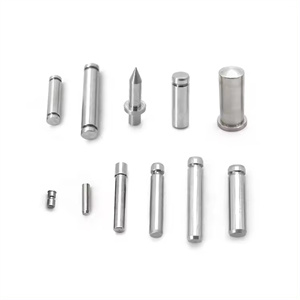Black Oxidation Treatment Of CNC Machining Shafts
The rust prevention effect of the Shafts (shaft) after black oxidation treatment is significant, mainly due to the formation of a Fe2O3 (Fe2O3) film layer during the treatment process. The following is a detailed analysis of the rust prevention effect of Shafts black oxidation treatment:
1. Processing principle
Black oxidation treatment is a chemical surface treatment method, which is based on the use of specific chemical solutions (usually including sodium hydroxide, sodium nitrite, etc.) to react with the Shafts surface in high or low temperature environments, generating a dense layer of Fe3O4 film.
This oxide film can effectively isolate the direct contact between the Shafts surface and air and water, thereby significantly improving its rust prevention ability.
2. Processing effect
Rust proof performance: The ferric oxide film layer has excellent rust proof performance, which can protect the Shafts from corrosion for a long time. The oxide film formed at high temperatures (about 550 ℃) is sky blue, while the oxide film formed at low temperatures (about 350 ℃) is dark black. Both film layers have good rust prevention effects.
Appearance effect: The Shafts surface treated with black oxidation presents a uniform black or dark gray color, which not only improves its appearance quality but also eliminates reflective phenomena, making it suitable for applications sensitive to reflection.
3. Influencing factors
Processing temperature: Processing temperature is a key factor affecting the quality of the oxide film and the anti rust effect. The oxide film formed at high temperatures is denser, more uniform, and has a better rust prevention effect. However, excessively high temperatures may cause the oxide film to become too thick, brittle, or even crack.
Processing time: The length of processing time can also affect the quality and rust prevention effect of the oxide film. Appropriate processing time can ensure that the oxide film is fully formed and achieve the best rust prevention effect. However, prolonged processing time may lead to excessive thickness of the oxide film and a decrease in its mechanical properties.
Chemical composition: The chemical composition of the treatment solution also has a significant impact on the quality and rust prevention effect of the oxide film. Different chemical compositions and concentrations may lead to different oxide film structures and properties.
4. Process flow
The process flow of black oxidation treatment usually includes the following steps:
Workpiece clamping: Design specialized fixtures or lifting tools based on the shape and size of the Shafts to ensure the stability and reliability of the workpiece during processing.
Degreasing: Use an alkaline solution to degrease and clean the Shafts to remove surface oil and impurities.
Acid washing: Use dilute sulfuric acid or other acidic solution to acid wash the Shafts to remove rust and oxides on the surface.
Oxidation: Put clean Shafts into black oxidation treatment solution and perform oxidation treatment at appropriate temperature and time.
Cleaning: Rinse the Shafts with clean water to remove any remaining oxidation solution on the surface.
Drying: Dry the oxidized Shafts to prevent rust caused by residual moisture.
Shafts have significant rust prevention effects after black oxidation treatment. Through reasonable processing technology and parameter control, it can be ensured that the formed Fe3O4 film layer has excellent rust prevention and mechanical properties. In practical applications, it is necessary to choose appropriate treatment processes and materials based on specific usage environments and requirements, and regularly inspect and maintain the rust prevention status of Shafts to ensure their long-term stable operation
